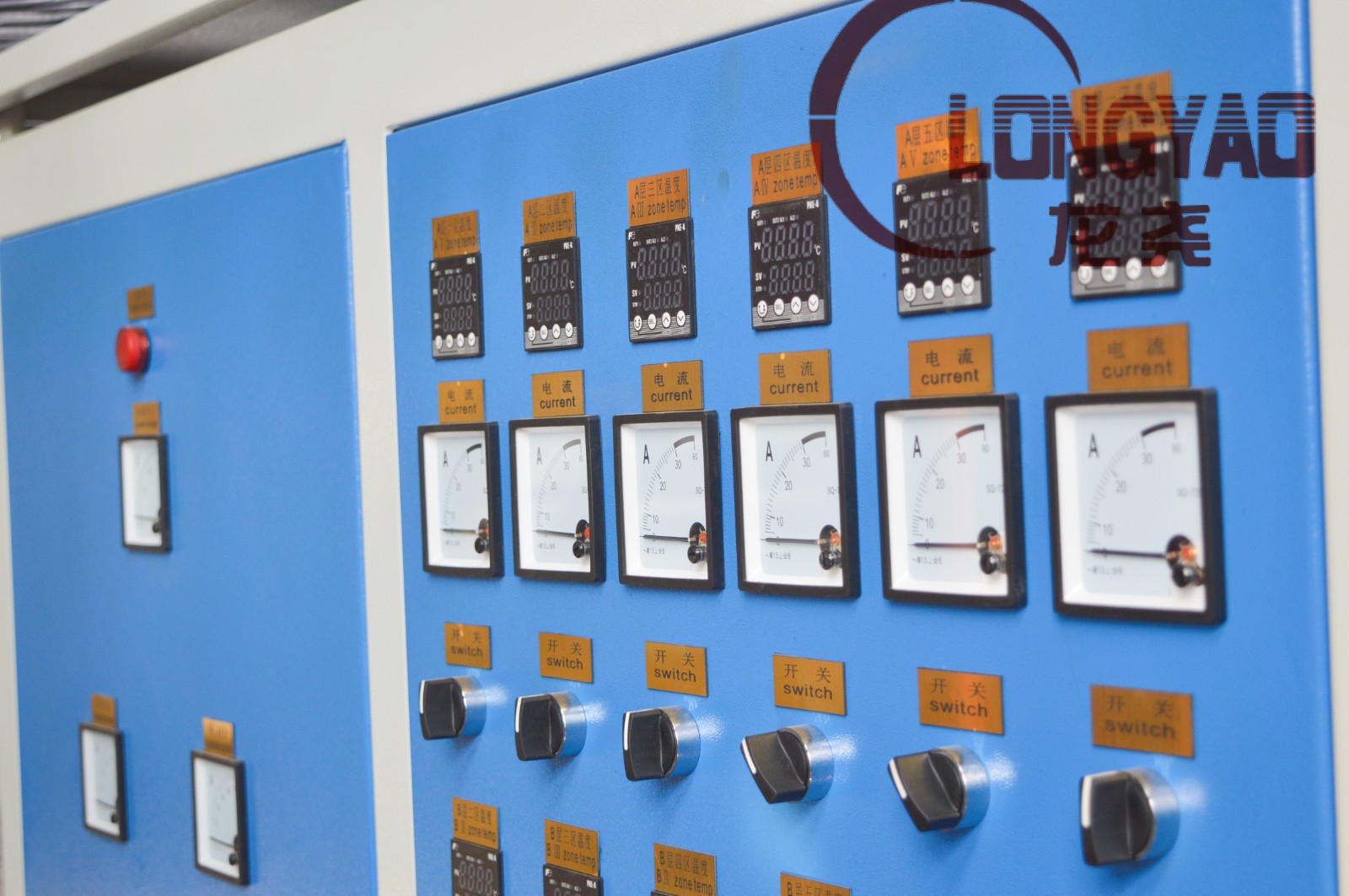According to the melting theory of plastics, the extruder screw of blown film is divided into three sections: feeding section, melting section and homogenizing section. At the end of the feeding section, when entering the melting section, its temperature should be the viscous flow temperature according to the melting theory. The viscous flow temperatures of various blown film resins are PP: 164-175°C, PE: 105-135°C

Feeding section temperature requirements
At the inlet of the feeding section, it is hoped that the temperature will be lower to prevent the resin from viscous flow from blocking the feeding inlet. In addition, the resin is continuously compressed in the feeding section, and the air should be discharged from the feeding inlet backwards. Depending on the structure of the equipment, although the feeding port is not electrically heated, the heat is transferred through the barrel, and the temperature of the feeding port is about 50-90 degrees. In this way, the temperature of the feeding section is determined. The entrance is 50-90 degrees, and the end is equal to the melting point or viscous flow temperature. In this section, the temperature can be set as a linear temperature increase.
Melting section temperature requirements
At the beginning of the melting section, the temperature reaches the viscous flow temperature to melt. For crystalline resins, the viscous flow temperature is equal to the melting point temperature. Then continuous compression and increase of the molten layer requires continuous increase of temperature to make the resin molecular chains of different lengths, and the polymers with different thermal kinetic energies are melted successively. Therefore, after the temperature at the end of the melting section is established, it can be determined as the temperature at the end of the melting section. Other parts on the top are linearly heated.
Homogenization section temperature requirements
In the homogenization section, it is mainly re-melting homogenization and quantitative constant pressure and constant temperature output of the melt. The temperature of this section can be kept constant, or the temperature at the end of the melting section can be slightly increased (about 2-5 degrees).
For blown film, it is required that the temperature passing through the touch section should be lower, but it should not be lower than the viscous flow temperature, which is convenient for film lifting and normal film blowing. The melt must have a certain viscosity when it comes out of the die of the blown film machine, so as not to break the film, collapse the film and other phenomena. In general, it is about 10-30 degrees lower than the end of the homogenization section, and the temperature from the homogenization section to the mouth can also be regarded as an equal temperature drop.
Control points of extrusion temperature
1. Different kinds of resins have different process temperatures for blown film.
2. For the same resin, the type and melt index are different, and the temperature of the film blowing process is different. The higher index has better fluidity and lower temperature.
3. For the same kind of resin, the process temperature is also different for blown films with different thicknesses. For thicker films, the process temperature can be higher.
4. The temperature of the die mouth of the blown film machine can also be a little higher, which is beneficial to reduce the viscosity and increase the productivity.
